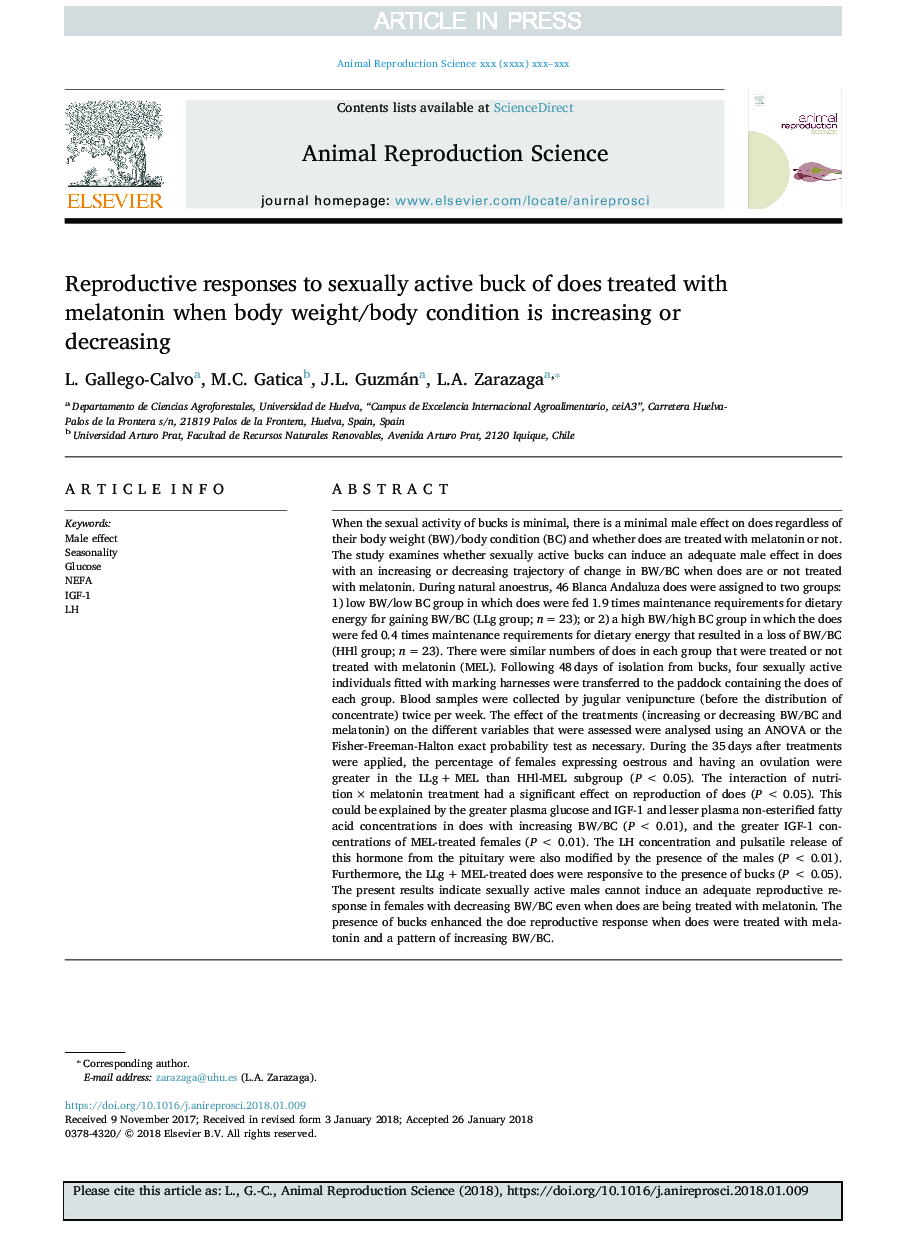| Article ID | Journal | Published Year | Pages | File Type |
|---|---|---|---|---|
| 8403987 | Animal Reproduction Science | 2018 | 10 Pages |
Abstract
When the sexual activity of bucks is minimal, there is a minimal male effect on does regardless of their body weight (BW)/body condition (BC) and whether does are treated with melatonin or not. The study examines whether sexually active bucks can induce an adequate male effect in does with an increasing or decreasing trajectory of change in BW/BC when does are or not treated with melatonin. During natural anoestrus, 46 Blanca Andaluza does were assigned to two groups: 1) low BW/low BC group in which does were fed 1.9 times maintenance requirements for dietary energy for gaining BW/BC (LLg group; nâ¯=â¯23); or 2) a high BW/high BC group in which the does were fed 0.4 times maintenance requirements for dietary energy that resulted in a loss of BW/BC (HHl group; nâ¯=â¯23). There were similar numbers of does in each group that were treated or not treated with melatonin (MEL). Following 48â¯days of isolation from bucks, four sexually active individuals fitted with marking harnesses were transferred to the paddock containing the does of each group. Blood samples were collected by jugular venipuncture (before the distribution of concentrate) twice per week. The effect of the treatments (increasing or decreasing BW/BC and melatonin) on the different variables that were assessed were analysed using an ANOVA or the Fisher-Freeman-Halton exact probability test as necessary. During the 35â¯days after treatments were applied, the percentage of females expressing oestrous and having an ovulation were greater in the LLgâ¯+â¯MEL than HHl-MEL subgroup (Pâ¯<â¯0.05). The interaction of nutritionâ¯Ãâ¯melatonin treatment had a significant effect on reproduction of does (Pâ¯<â¯0.05). This could be explained by the greater plasma glucose and IGF-1 and lesser plasma non-esterified fatty acid concentrations in does with increasing BW/BC (Pâ¯<â¯0.01), and the greater IGF-1 concentrations of MEL-treated females (Pâ¯<â¯0.01). The LH concentration and pulsatile release of this hormone from the pituitary were also modified by the presence of the males (Pâ¯<â¯0.01). Furthermore, the LLgâ¯+â¯MEL-treated does were responsive to the presence of bucks (Pâ¯<â¯0.05). The present results indicate sexually active males cannot induce an adequate reproductive response in females with decreasing BW/BC even when does are being treated with melatonin. The presence of bucks enhanced the doe reproductive response when does were treated with melatonin and a pattern of increasing BW/BC.
Related Topics
Life Sciences
Agricultural and Biological Sciences
Animal Science and Zoology
Authors
L. Gallego-Calvo, M.C. Gatica, J.L. Guzmán, L.A. Zarazaga,
